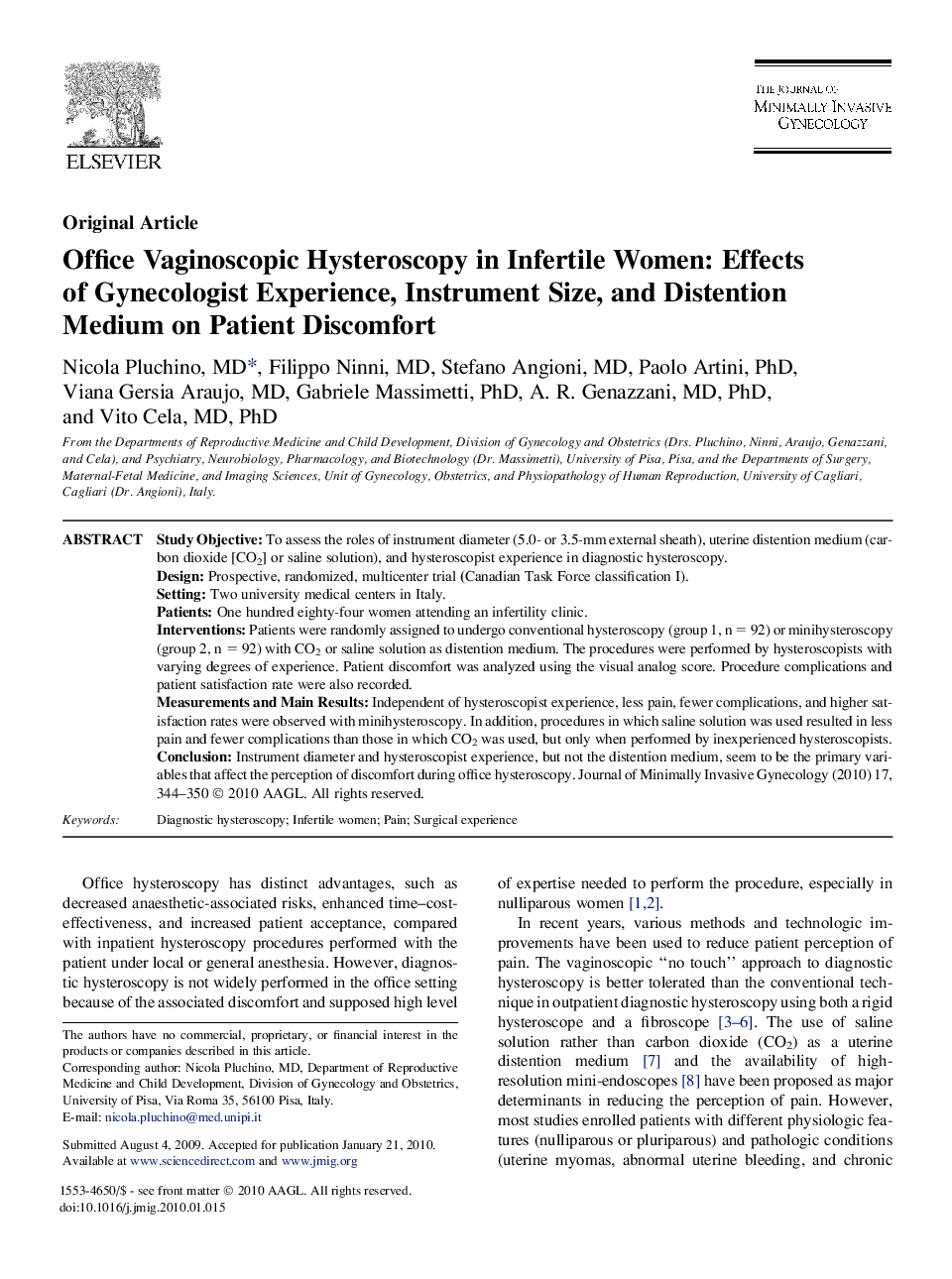| Article ID | Journal | Published Year | Pages | File Type |
|---|---|---|---|---|
| 3959473 | Journal of Minimally Invasive Gynecology | 2010 | 7 Pages |
Study ObjectiveTo assess the roles of instrument diameter (5.0- or 3.5-mm external sheath), uterine distention medium (carbon dioxide [CO2] or saline solution), and hysteroscopist experience in diagnostic hysteroscopy.DesignProspective, randomized, multicenter trial (Canadian Task Force classification I).SettingTwo university medical centers in Italy.PatientsOne hundred eighty-four women attending an infertility clinic.InterventionsPatients were randomly assigned to undergo conventional hysteroscopy (group 1, n = 92) or minihysteroscopy (group 2, n = 92) with CO2 or saline solution as distention medium. The procedures were performed by hysteroscopists with varying degrees of experience. Patient discomfort was analyzed using the visual analog score. Procedure complications and patient satisfaction rate were also recorded.Measurements and Main ResultsIndependent of hysteroscopist experience, less pain, fewer complications, and higher satisfaction rates were observed with minihysteroscopy. In addition, procedures in which saline solution was used resulted in less pain and fewer complications than those in which CO2 was used, but only when performed by inexperienced hysteroscopists.ConclusionInstrument diameter and hysteroscopist experience, but not the distention medium, seem to be the primary variables that affect the perception of discomfort during office hysteroscopy.
